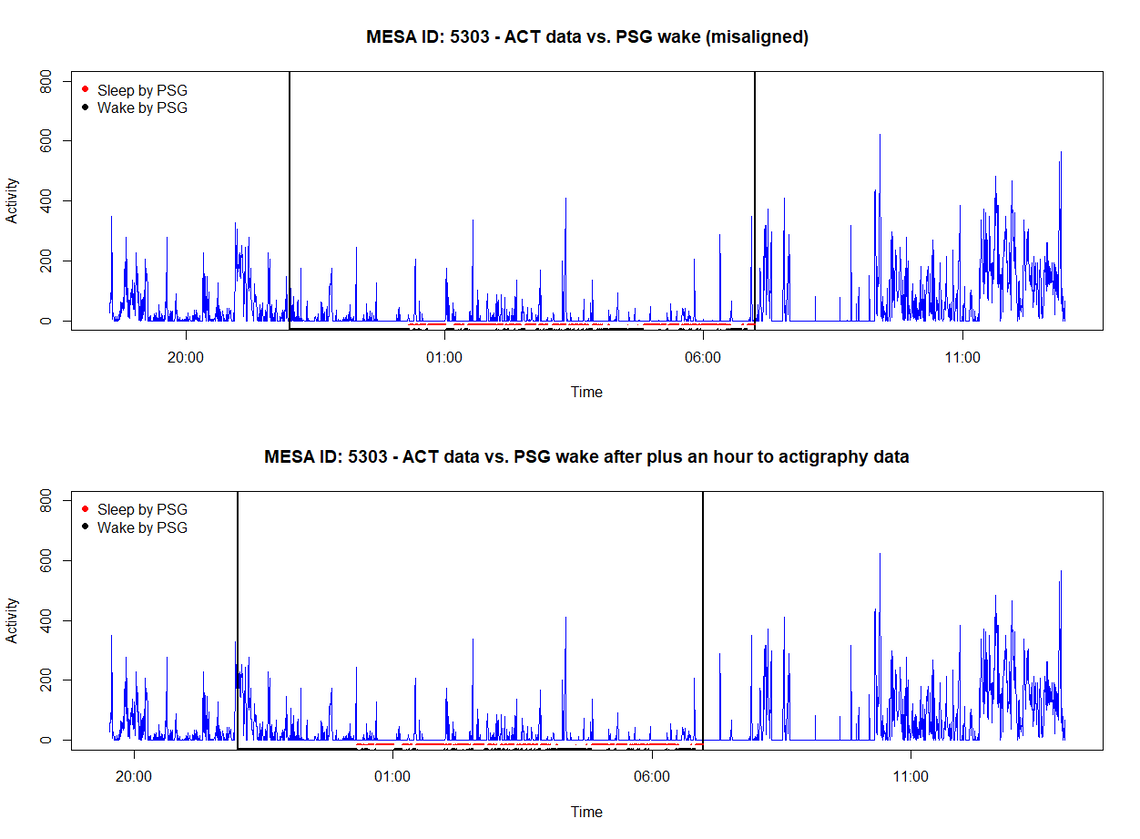I am noticing many subjects with temporal misalignment between actigraphy data and PSG data.
For instance, for mesa id 4892, actigraphy data were merged with PSG data based on the overlap file b/c the overlap file shows where to merge between the two files. As you can see the below figures, the first figure shows that activity counts from actigraphy data and vertical lines shows PSG where PSG data start and end. On the figure, red dots and black dots below blue activity counts show where sleep and wake occurred from PSG. Looking at the first figure made me wonder why there is no counts of activity, but wake from PSG?? After moving one hour of actigraphy data (the second figure), I was certain that there was misalignment between two data sets. That is, information provided by the overlap data obviously is incorrect. This case with mesa id 4892 is not the only case. I found many cases. Would you please correct the overlap file?
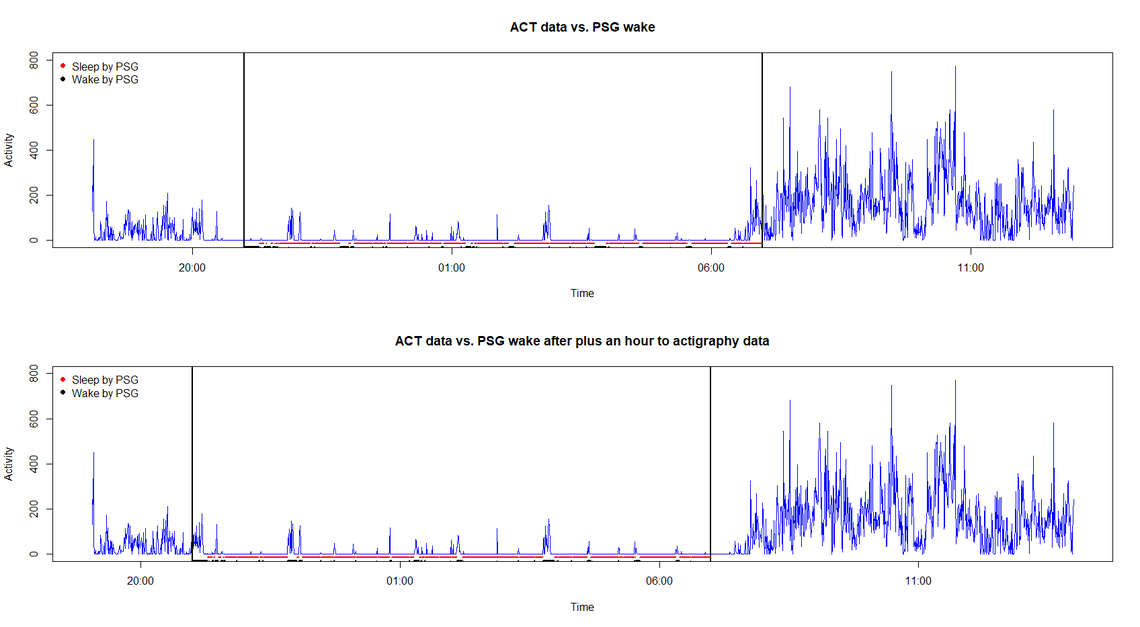
Hey jongguri,
Thanks for diving into the MESA PSG and actigraphy data and posting this question. PSG and actigraphy were scored independent of one another, so some incongruity may be expected when overlapping the two data sources. The PSG and actigraphy devices were meant to be initialized and setup on the same computer such that the internal timekeeping would match.
Everything I see about subject 4892 looks "OK" from my end. I double-checked with the PSG scorer that the time for sleep onset (9:17 p.m.) is set correctly. The device was set to record between 9:00 p.m. and 7:00 a.m. The subject is very still (based on the activity counts) for some time before 9:17 - maybe they were lying in bed before actually trying to fall asleep. We see this a lot, which adds some guesswork to determining where sleep actually begins when reviewing the actigraphy data.
Please let me know if you find any other questionable disagreements when using the overlap file.
Mike
Hi Mike,
Thank you for looking into this. As you mentioned that PSG and actigraphy devices were meant to be initialized and setup on the same computer such that the internal timekeeping would match. but they seem NOT. I saw a lot of cases that do not match in practice. When they matched, the patterns should be consistent. This is the reason why actigraphy would be an alternative way to PSG to detect sleep timings and period. Here are some subjects where their patterns are well matched (mesa id: 0001, 0002, 0183, 0188).
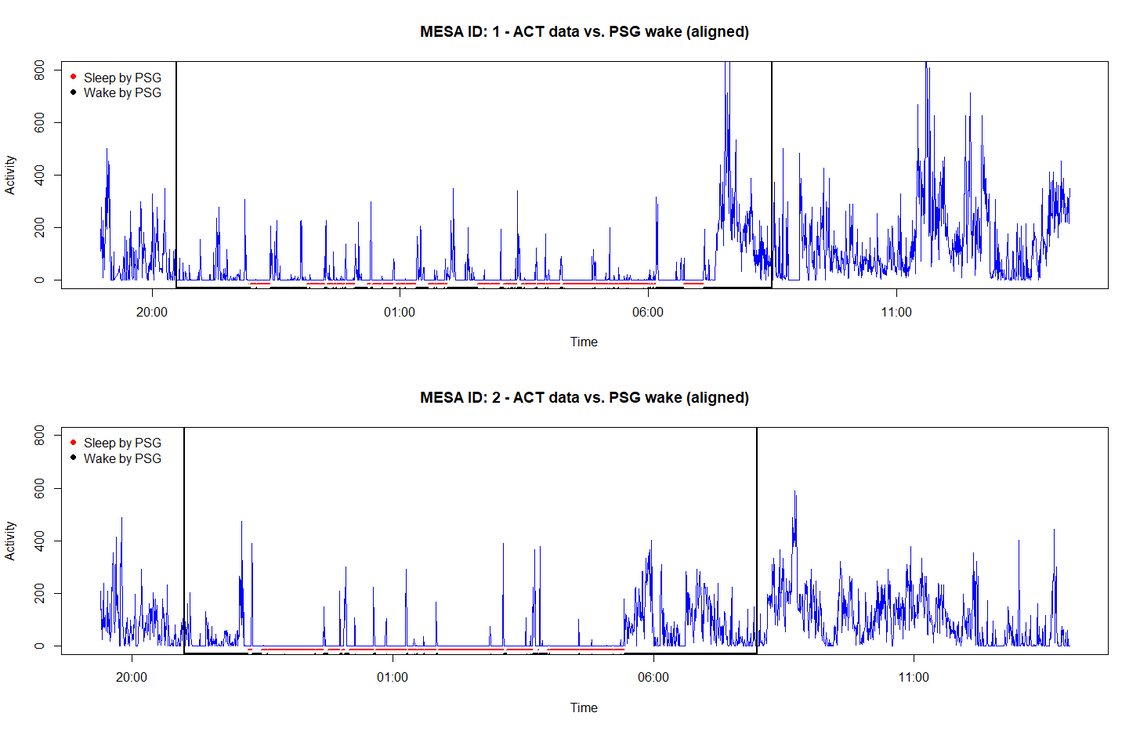
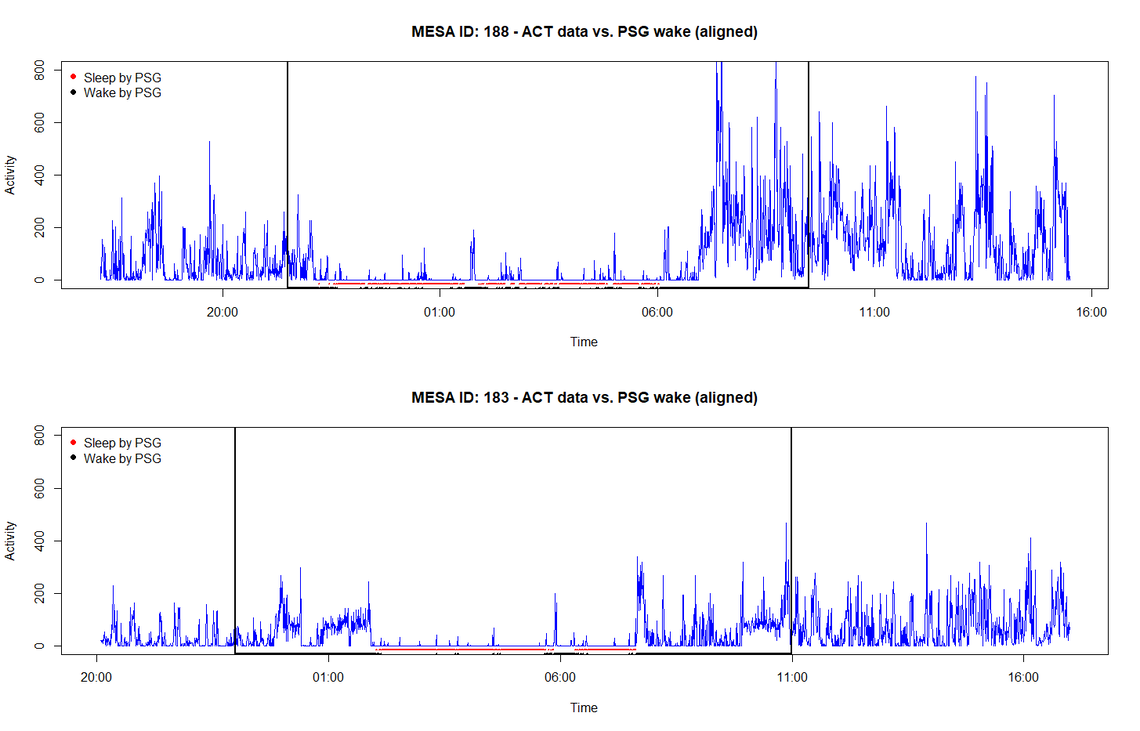
However, the below shows when they do not match....(mesa id: 4892, 5187, 5827, 6318, and more) That is, misalignment. MESA ID 4892: an hour mismatch MESA ID 5187: 47 min mismatch MESA ID 5827: an hour mismatch MESA ID 6318: an hour mismatch
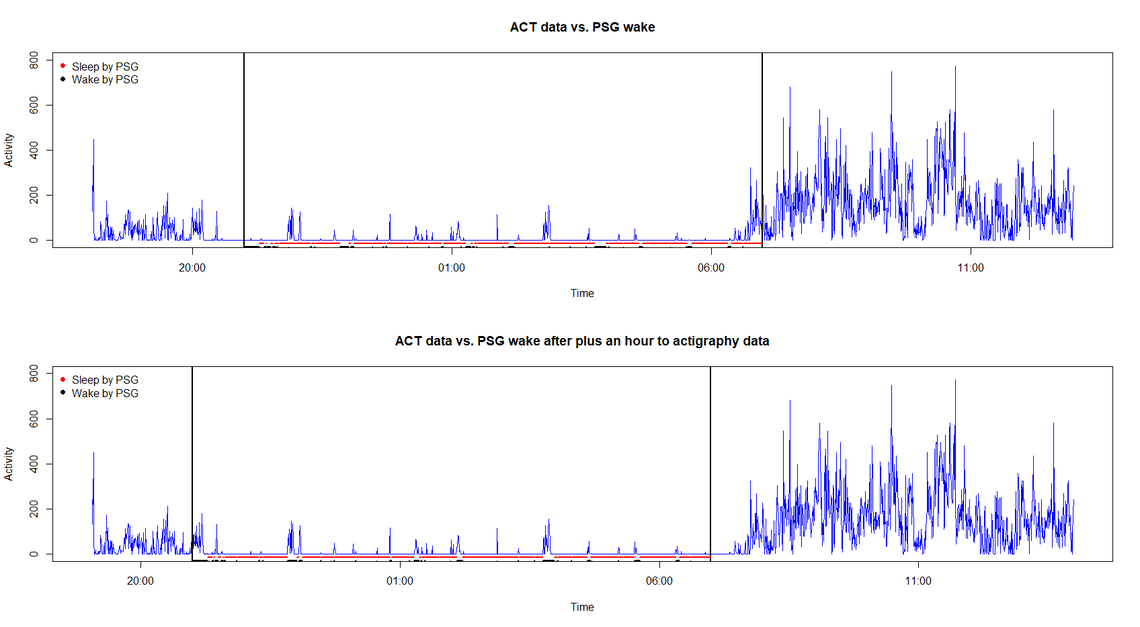
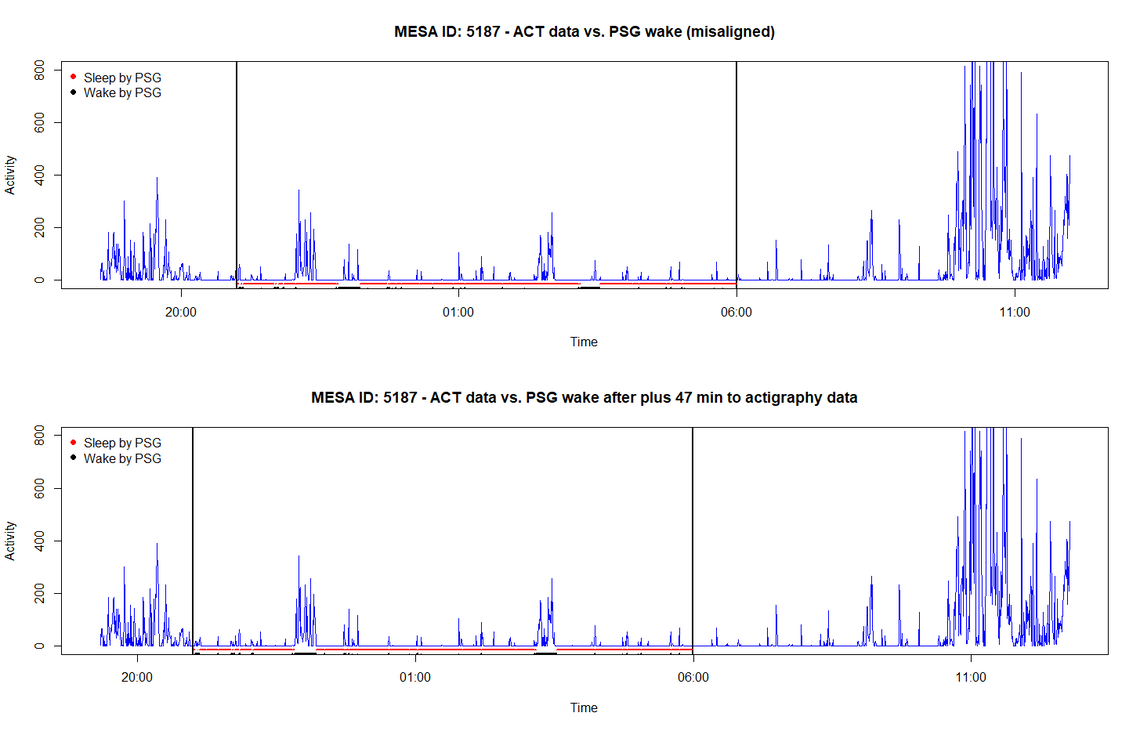
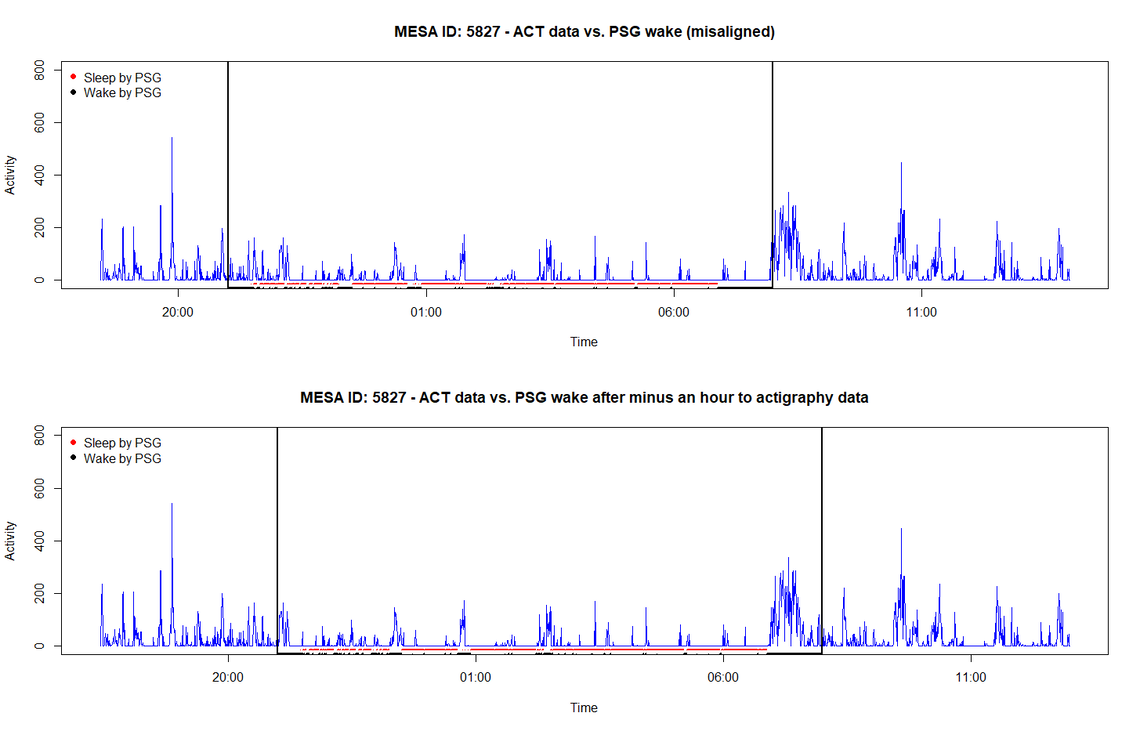
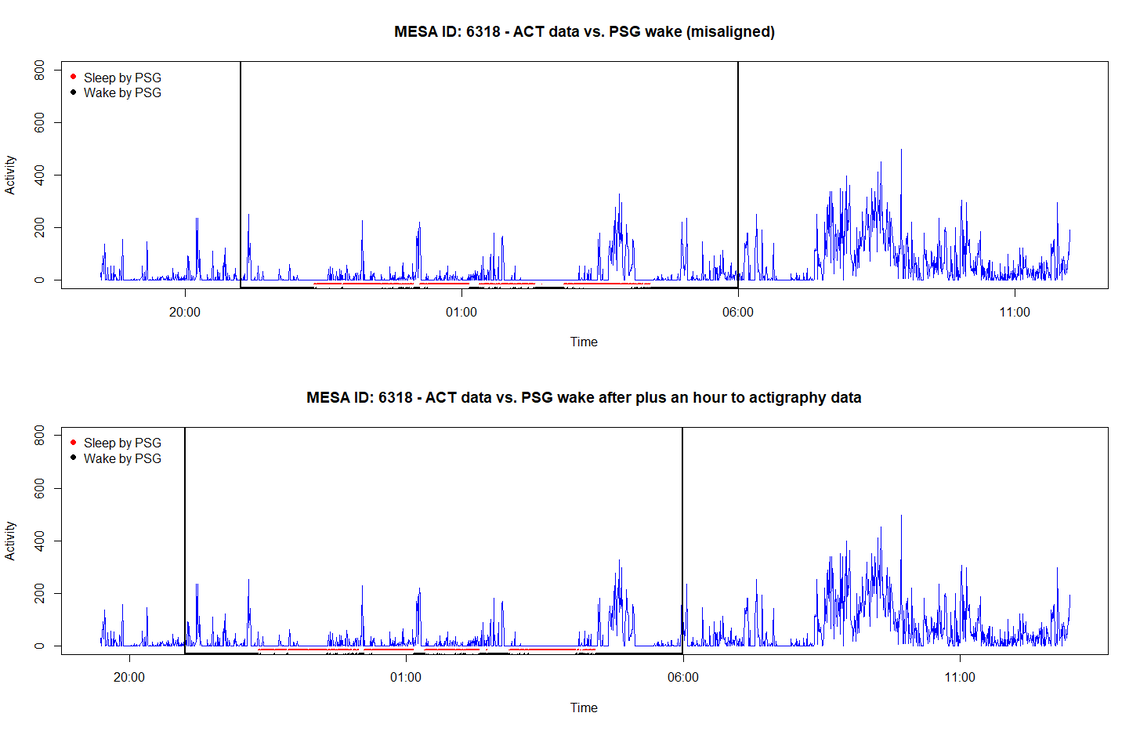
Please take this misalignment issue more carefully? This MESA Sleep data is important for our research.......
Thanks! How about these IDs? These subjects all used the same actigraphy device and the studies below occurred in chronological order, with some other subjects in between who did not have accompanying PSG data. Between Groups 1 and 2 I believe the actigraphy device may have gone to the manufacturer for maintenance/repairs. Between Groups 2 and 3 there was a daylight saving time shift. I am curious to see if there is a point in time where the watch shifts from being aligned to misaligned, so to speak.
Group 1
- 3931
- 1374
- 3529
Group 2
- 2828
- 1227
- 3819
Group 3
- 5793
- 2820
- 5303 (already done above)
- 6318 (already done above)
Thank you for more details about what happened during the study. MESA ID: 1374 looks weird (seems an hour misalignment) compared to the other two MESA ID 3931 and 3529 (seems well aligned). What I see from data is summarized below.. Those time correction is solely from my "guesstimates"... Also, I definitely see about an hour misalignment of actigraphy data from group 2 to group 3 possibly due to a daylight saving.
Group 1
• 3931: ok
• 1374: - an hour misalignment
• 3529: ok
Group 2
• 2828: - 5 min
• 1227: - 5 min
• 3819: - 5 min
Group 3
• 5793: + 55 min
• 2820: + 55 min
• 5303: an hour
• 6318: an hour
Here are plots for each group
Group 1
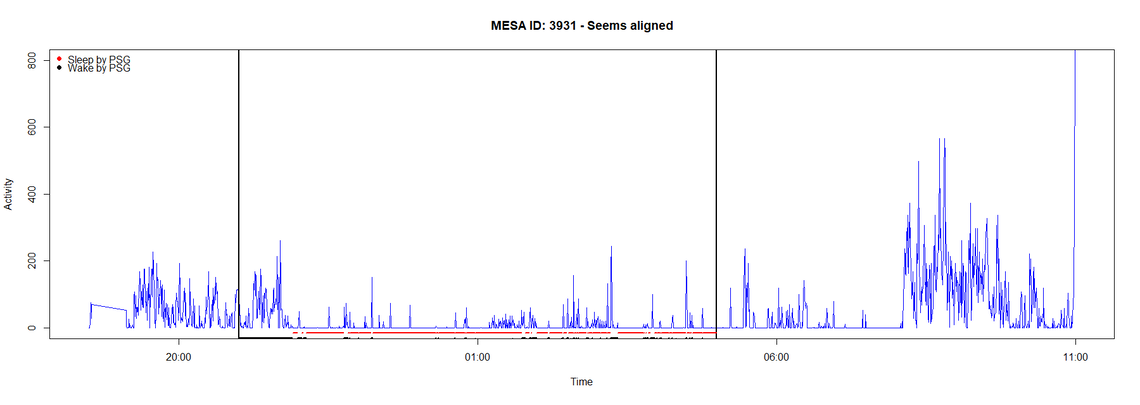
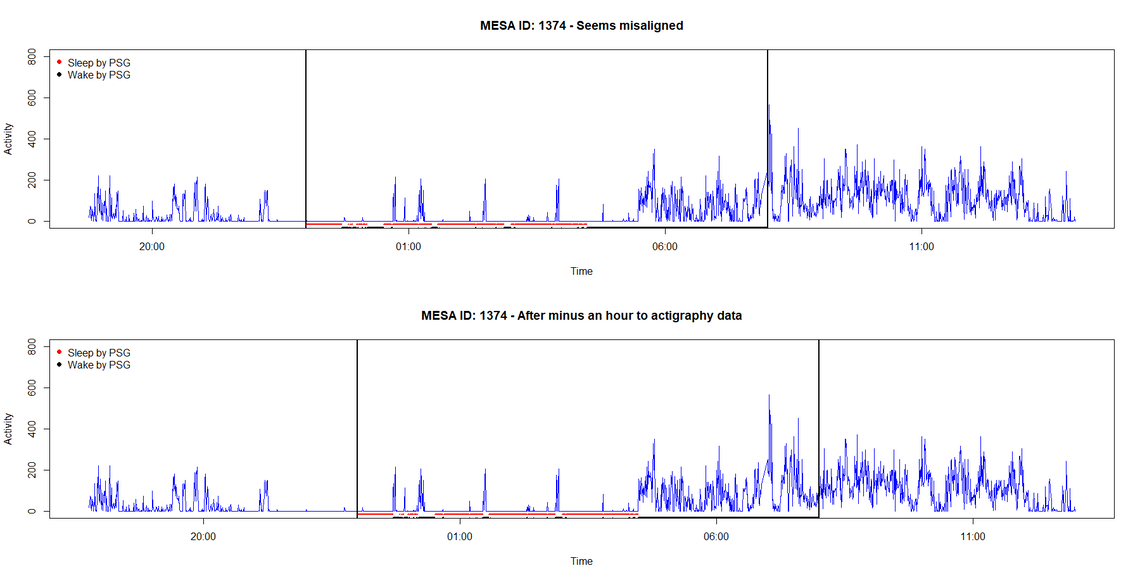
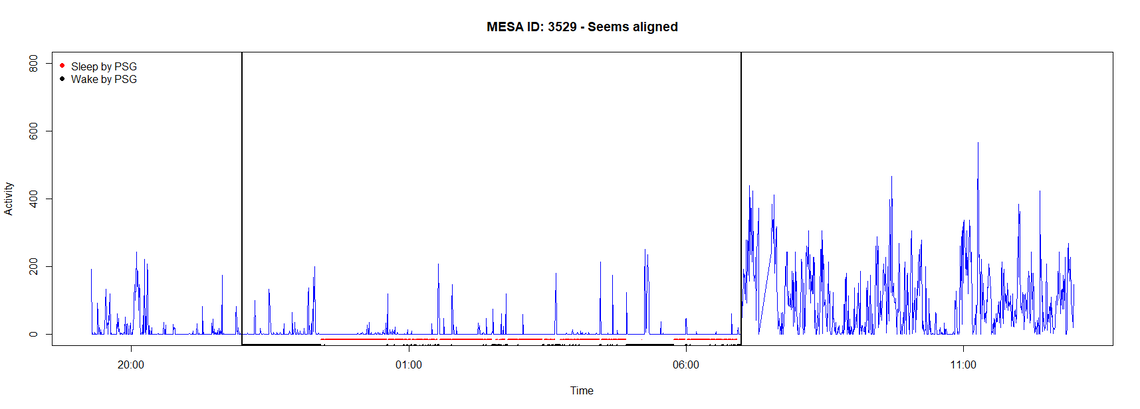
Group 2
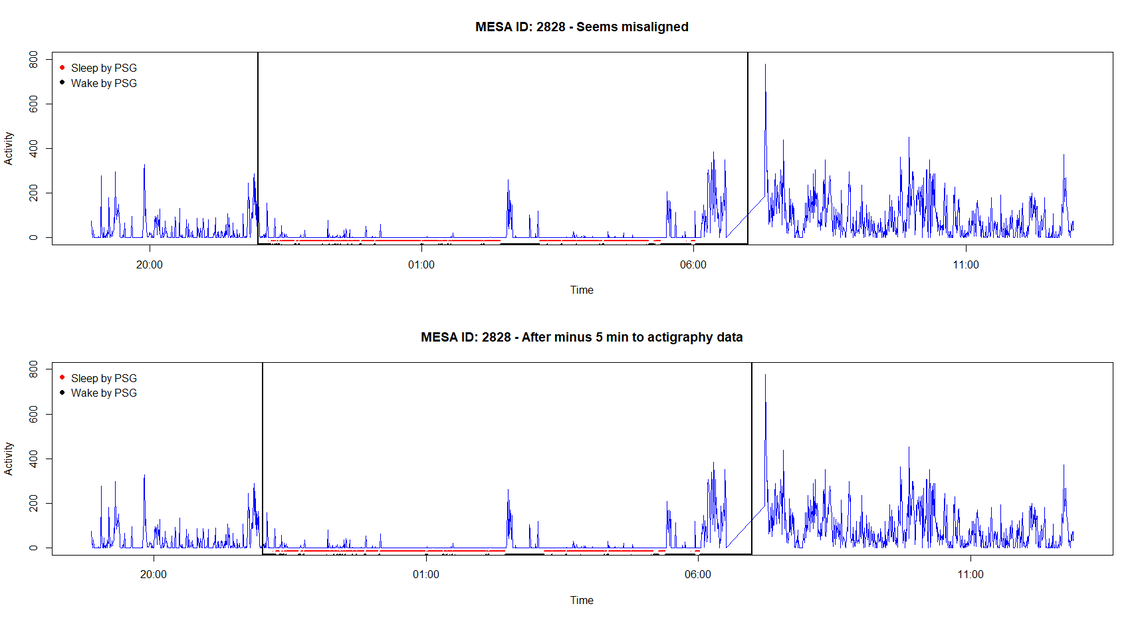
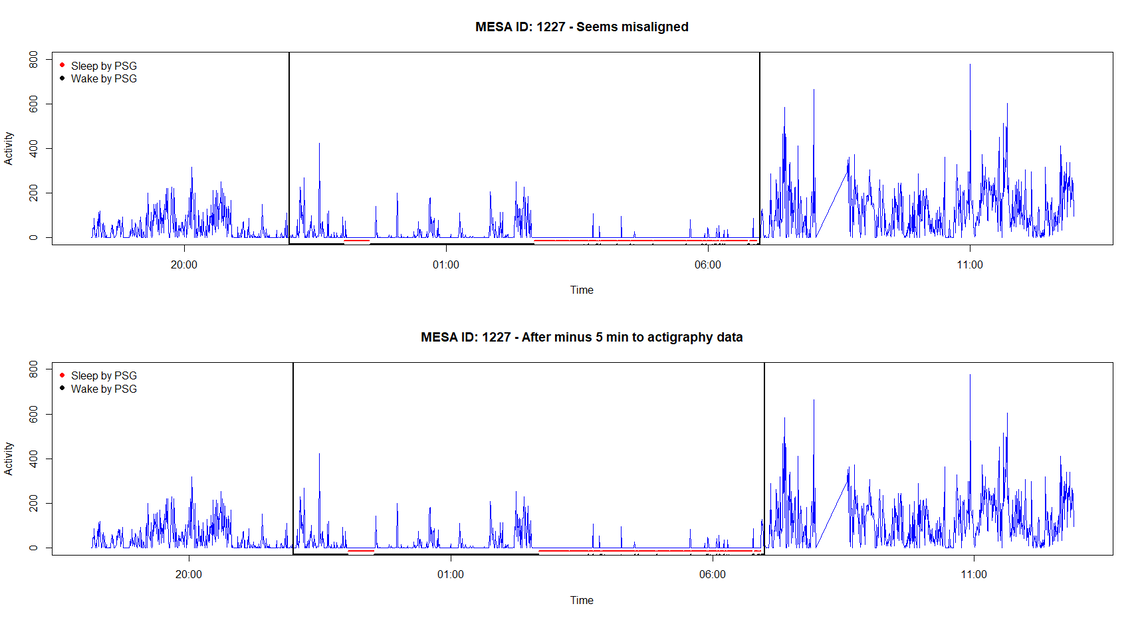
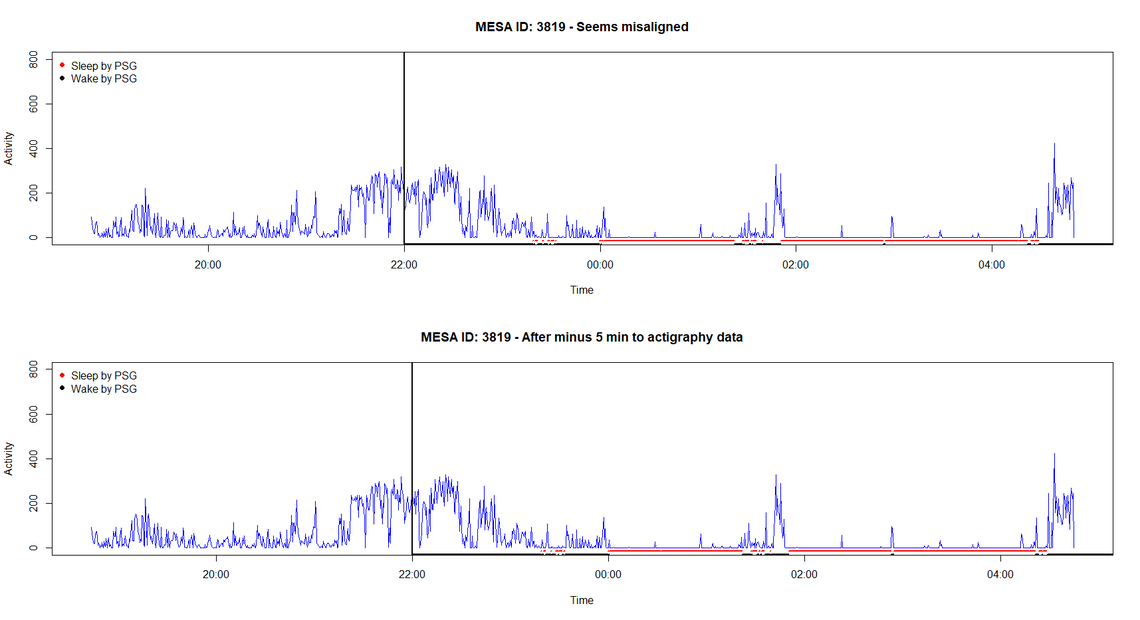
Group 3
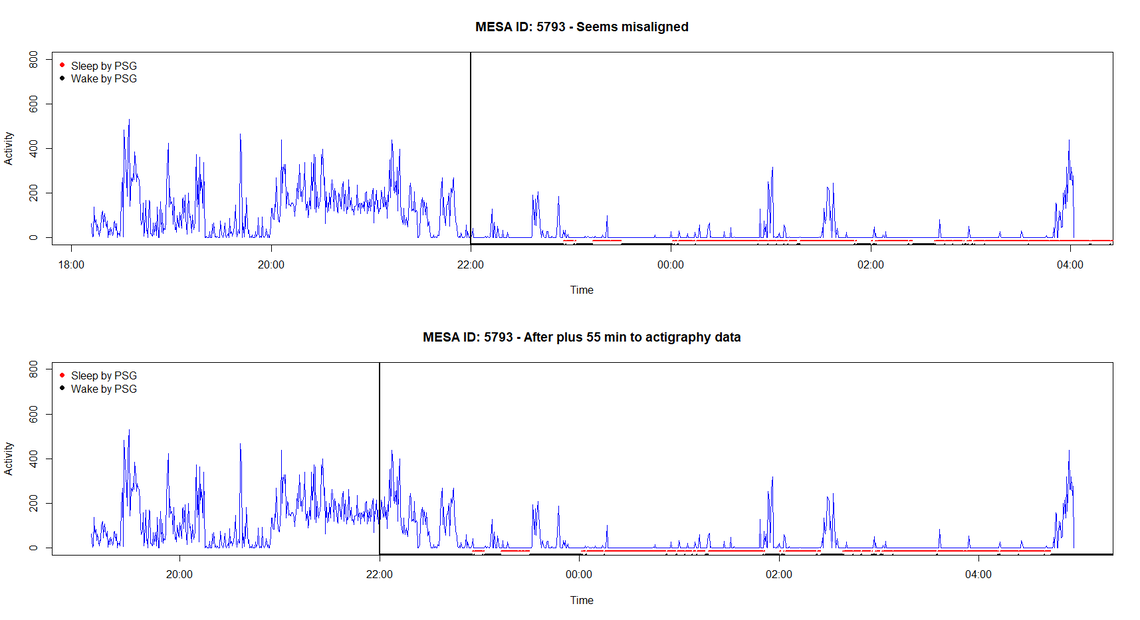
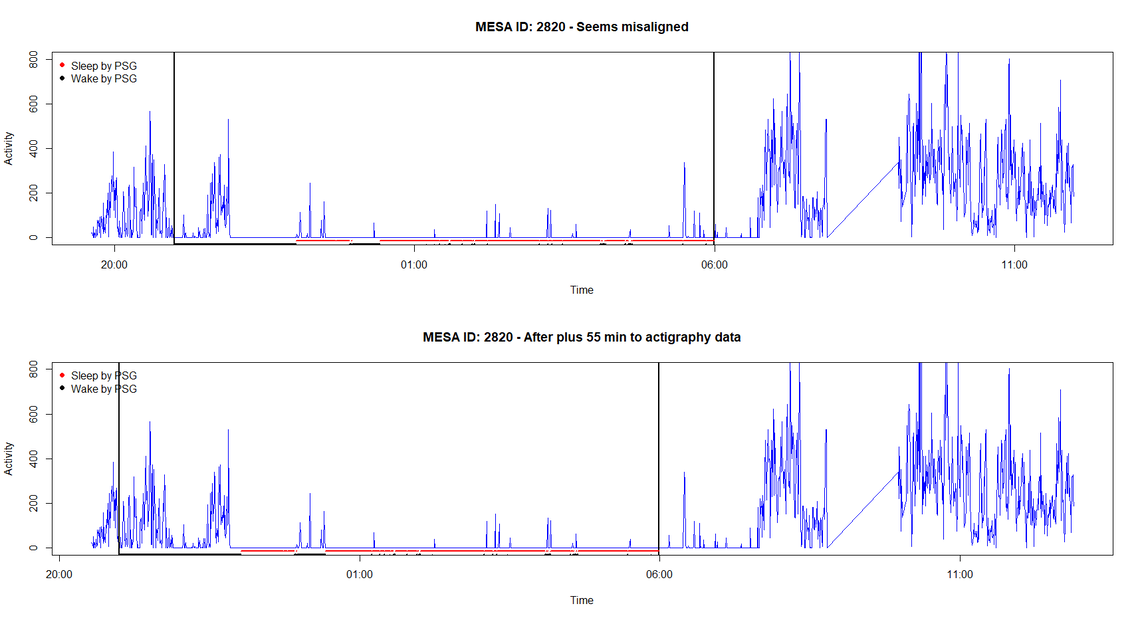
Could you shed more light on how many subjects you have found that are affected with the misalignment issue? Did you do a test across all 1,800+ subjects with overlapping PSG/actigraphy, or did you identify the problematic subjects above in a more piecemeal fashion? Originally you said you were "noticing many subjects with temporal misalignment".
Thanks!
Hi Mike,
I don't have the exact number of subjects with the misalignment issue. I was trying to do a validation study between Actigraphy and PSG to detect sleep timing, but found this issue. So, I looked plots from around a hundred of subjects and noticed not a couple of cases with misalignment, but more than that. Then, I posted this issue here because all 1800+ subjects by my eyeballing would take too much time without guarantee that I correctly matched the two data sets.
Thanks,
Jonggyu
